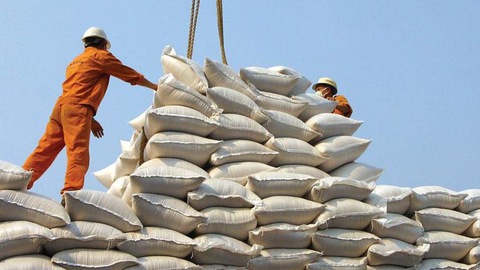The News
Assessing potential of rice exports to Malaysia
Malaysia is a country that does not have good soil conditions for growing rice, focusing on oil palm and rubber. The cultivated area of this country is relatively low, with only 700,000 hectares of rice growing which is also the smallest rice growing area in the Southeast Asia. Their rice self-sufficiency can only meet about 65-70% of the domestic demand, so they have to import from 900 thousand to 1 million tons annually to meet the domestic demand and reserve depending on the domestic rice production.
Malaysia is a country that does not have good soil conditions for growing rice, focusing on oil palm and rubber. The cultivated area of this country is relatively low, with only 700,000 hectares of rice growing which is also the smallest rice growing area in the Southeast Asia. Their rice self-sufficiency can only meet about 65-70% of the domestic demand, so they have to import from 900 thousand to 1 million tons annually to meet the domestic demand and reserve depending on the domestic rice production.

Malaysia is a country that does not have good soil conditions for growing rice, focusing on oil palm and rubber. The cultivated area of this country is relatively low, with only 700,000 hectares of rice growing which is also the smallest rice growing area in the Southeast Asia. Their rice self-sufficiency can only meet about 65-70% of the domestic demand, so they have to import from 900 thousand to 1 million tons annually to meet the domestic demand and reserve depending on the domestic rice production.
In Malaysia, Padiberasnasional Berhad (Bernas Berhad) is the sole importer of long white rice which is consumed mainly in Malaysia. This exclusivity period was implemented under a contract signed with the government in 1996 and has been being still in force today. However, in addition to the monopoly and distribution of long white rice, this enterprise is also responsible for maintaining the country's rice stocks on behalf of the government, acting as the ultimate buyer of rice for farmers, managing milling facilities as well as distributing paddy price subsidies to farmers. The fragrant white rice and sticky rice (glutinous) are not affected by this contract, which means that Malaysian businesses are free to import.
According to Viet Nam Custom’s statistic, in 2018, Viet Nam's rice export turnover to Malaysia reached 216.8 million USD, up 3.6% compared to 2017. In 2019, rice export turnover gained 218.8 million USD, up 0.9% compared to 2018. In 2020, Viet Nam's rice export turnover to Malaysia was 237.3 million USD, an increase of 8.5% compared to 2019. However, in 2021, rice export turnover only reached 87, 4 million USD, decreased by 50.5% compared to 2020. In the first 9 months of 2022, Viet Nam's exports to Malaysia reached 150.4 million USD, up 28.8% over the same period in 2021.
There are some of Viet Nam’s competitors in the Malaysian market including Thailand, India, Pakistan and Cambodia. In addition to 2018 which is the year that rice import from Viet Nam was lower than Thailand, the volume of rice import from Viet Nam surpassed Thailand and became the largest rice exporter in Malaysia over the period of 2017-2020. However, by 2021, according to the Department of Statistics Malaysia, India became the largest rice exporter in the Malaysian rice market with a market share of 37.1% (equivalent to an import turnover of 213 million USD) while Viet Nam accounted for a market share of 23.1%.
Apart from the issue of increasing volume, Viet Nam enterprises also need to focus on branding and promote export of high-quality and high-value aromatic rice products. In this market, Vietnamese rice has not been yet created its own brand. Therefore, Viet Nam businesses need to improve the quality as well as promote Vietnamese rice to local people in Malaysia./.


